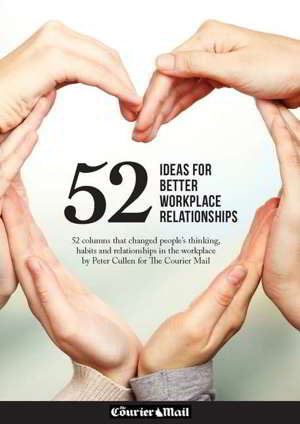Peter Cullen is currently the author of the Career Doctor articles appearing in the Institute of Managers and Leaders publication named Leadership Matters. The columns on this page have appeared in Leadership Matters. Peter also wrote a weekly column on Workplace Behaviour for the Courier Mail in Queensland. The ebook containing the Courier Mail articles is a free download.
Bouncing back When 360-degree feedback is Hard to Take
Stop! Take a deep breath and put your initial thoughts and feelings to one side. Why? Because this a great opportunity for personal and professional development.
360-degree feedback tools are typically completed by your manager, peers, direct reports and sometimes yourself. They may be based on emotional intelligence, leadership or behaviour. They provide consolidated analysis of their, and possibly your perceptions of who you are. Some 360-degree reports may also include clients and suppliers to complete a much broader picture. They are typically used annually as a measure of performance and directly related to role or personal benchmarks and to clearly identify development needs.
They are a great opportunity for raters to provide open, honest, affirmative and developmental feedback during discussion with you. The discussion may focus on what is working really well and why along with areas for improvement and how. You must also have the opportunity to respond the same way. This should become an integral part of your personal and professional development plan.
They are not to be used by raters to be vindictive, provide criticism, payback or be negatively judgemental about you when rating or during discussions with you.
First time participants, those with negative previous experiences or a person who finds the feedback hard to accept could understandably feel a little anxious, nervous or even fearful of the results and upcoming discussions with raters. Here are some tips to help you through.
1.Summon courage: These conversations will be had whether you like it or not. It is better to acknowledge this fact, accept this as a personal challenge and make the decision to engage with a positive approach knowing the outcome is for your personal and professional development and to improve your relationships with your manager, peers and direct reports.
2.Be objective: Wherever possible ensure the raters affirmative and developmental feedback is not personal. Seek clarity on the feedback to ensure it is evidence based and factual as there is no place for rumour and innuendo.
3.Have an open mind: This means entering every discussion without preconceptions, assumptions or bias. It is about being open to hear whatever is discussed, to respond honestly and allow the conversation to flow. It does take a certain degree of confidence in yourself and your communication skills.
4. Engage: Be 100% focused on the other person whilst being mindful of yourself in the way you feel and respond. A core component of engagement is also your ability to respectfully and appropriately challenge what is being said when your understanding and personal truth is different. Explaining the ‘why’ is a core component of helping raters to understand the meaning, reasoning and context of your understanding and truth.
5. Summarise: Each discussion should be completed with a written summary of next steps, follow ups and continued open discussions on you and the raters agreed areas of development. Yes, the raters should also have some agreed areas to work on.
360-degree feedback stimulates self-reflection and leads to greater self-awareness. It is a wonderful opportunity to learn about yourself, the person you are and how you can develop personally and professionally. When conducted properly, 360-degree feedback is an integral stepping stone towards collaboration and cohesion. Most importantly, it establishes trust in yourself, the team and the organisation.
Recent articles
- What Should You Do When A Manager Treats Staff Badly?
- An Aim Specialist Takes A Problem To Task
- 5 Practical Ways A New Leader Can Make A Positive Impact
- Bouncing back When 360-degree feedback is Hard to Take
- Choose a Candidate
Tags
FREE eBOOK OFFER

REGISTER your details to receive a copy of my eBook, "52 Ideas for Better Workplace Relationships"
